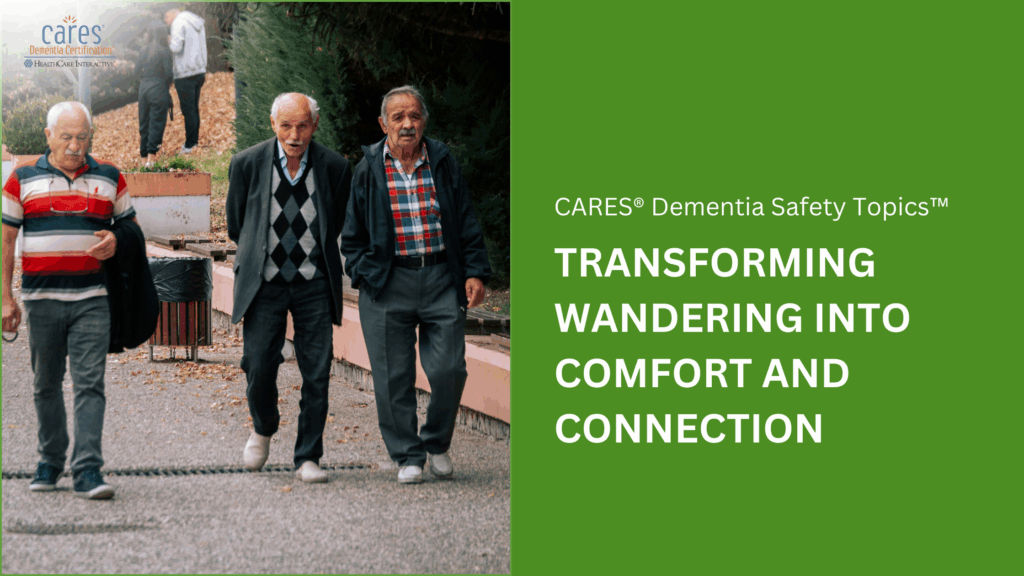Wandering is a natural behavior for many people living with dementia. While it can sometimes lead to unsafe situations, it can also be turned into a positive and meaningful activity with the right environment. By shaping spaces thoughtfully and offering calming outlets, caregivers can encourage “positive wandering” while discouraging unsafe or “negative wandering.”
Here are some simple ways to support safe and beneficial exploration:
1. Make Exit Doors Less Noticeable
Painting exit doors to blend into the environment—for example, with an outdoor scene—can help prevent unsafe wandering to restricted areas. This reduces risk while keeping people at ease.
2. Create Clear Pathways
Clutter-free indoor and outdoor walkways give people safe routes to explore. These paths encourage natural movement without the worry of tripping hazards or confusion.
3. Provide Resting Spaces
Placing comfortable chairs and benches along walking routes allows people to rest when they get tired. Having safe places to pause encourages longer, more relaxed wandering.
4. Offer Recreational Zones
Small nooks filled with old-fashioned objects, puzzles, or familiar keepsakes can provide enjoyable distractions. These cozy exploration spots turn wandering into a meaningful activity rather than a risky one.
5. Use Soothing Sounds
Playing soft music or nature sounds can help calm people who feel restless or anxious while wandering. A peaceful soundscape makes the environment feel safe and welcoming.
6. Introduce Gentle Activities
Structured physical activities like chair exercises or simple movement routines give people a healthy outlet for energy. Rocking chairs or glider seats are another safe, calming option for those who walk frequently.
7. Add Visual Cues
People with dementia can become confused about where they are. Personal cues—such as their name in large print, a family photo, or a favorite object near their door—can help them recognize their own space and feel secure.
8. Provide Simple, Hands-On Tasks
Activities like folding laundry or sorting objects can give a sense of purpose and comfort. These simple tasks keep hands busy and minds engaged, reducing restless wandering.
Positive Wandering- Final Thoughts
Positive wandering is not just about keeping people safe—it’s about giving them freedom, purpose, and dignity. By making small changes to the environment and offering thoughtful activities, caregivers can transform wandering from a risk into a beneficial part of daily life.
Get 10% off on CARES® training and discover practical ways to encourage safe, positive wandering while reducing risks in dementia care. Use code Halloween10 by November 15, 2025.

